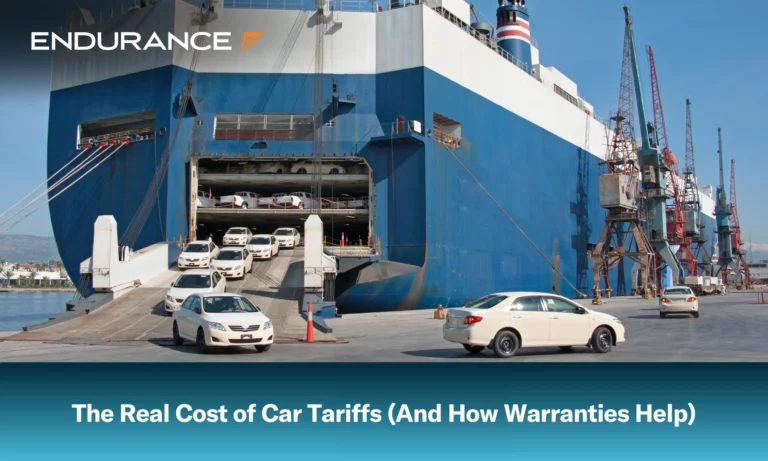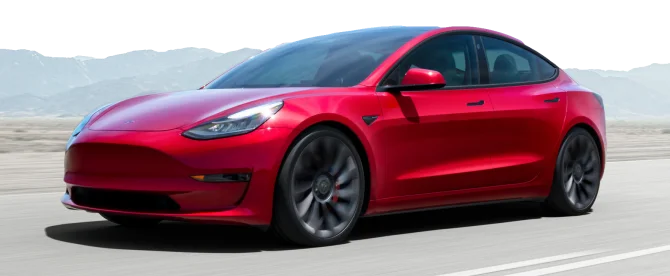How Climate Change is Influencing Car Repair Trends

Climate change is making car repairs more frequent and expensive. Extreme heat, freezing cold, flooding, and poor air quality are putting new stress on vehicle systems, from batteries and electronics to cooling and suspension. These conditions are causing parts to fail sooner and increasing the likelihood of costly breakdowns.
Regardless of your take on climate change, there’s no disputing that environmental factors impact car repair costs and frequency. Just ask the almost 350,000 owners whose vehicles were flooded by last year’s Hurricanes Milton and Helene. As weather patterns shift, car owners across the U.S. are facing repair issues that were once rare or regional. That’s why understanding these trends—and having warranty protection—has never been more important.
Are There Links Between Climate Change and Vehicle Wear and Tear?
From hailstorms and floods to scorching summer heat and plunging winter temperatures, these extreme weather events, driven in part by rising carbon dioxide and other greenhouse gas levels, impact everything, from internal vehicle components to the paint. Let’s break these effects down.
To start, significant temperature variations stress different vehicle systems. High heat can cause rubber seals and plastic components to deteriorate. At the same time, metal parts can expand beyond their original tolerances, and cooling systems can also be taxed. Blistering heat also causes tires to wear down more quickly and can push air conditioning systems beyond their limits. We can take this approach even further by mentioning how roads, when exposed to heat and water, develop potholes and cracks. These uneven surfaces can damage the tires and suspension.
Add below-freezing conditions to the mix down the line, and batteries and other components are hit with a different type of strain. Parts not built for constant hot-and-cold shifts can wear out faster. Real-life scenarios where this could have happened include “The Great Texas Freeze” of February 2021, with the Dallas-Fort Worth region suffering through over ten days of below-freezing temperatures and several nearby locales experiencing below-zero wind chills. Meanwhile, 2023 was one of Wisconsin’s hottest years on record. The list of extreme climate conditions could go on and on.
How Flooding is Causing a Rise in Water-Damaged Cars
How much damage can water cause to an automobile? Ask YouTuber Randy Shear, whose channel, Auto Auction Rebuilds, regularly features vehicles that have been converted into submarines. These flooded cars not only have damaged interiors, but the excessive moisture also erodes the numerous electronic components that are integral in modern vehicles.
Once the water intrudes, the corrosion process begins, and is made even worse if saltwater is involved. Metal components, such as brake lines and engine mounts, begin to deteriorate. Even after the flooding has subsided, moisture is trapped, keeping the corrosion process going for months or longer. Any resulting mold and mildew doesn’t help matters.
As mentioned, there’s no shortage of flood-damaged cars thanks to hurricanes and other natural disasters. Insurance companies tend to declare these vehicles as total losses due to the extensive electrical and mechanical problems that develop, as well as the uncertainty about future repairs.
Yet flood-damaged cars don’t disappear; they often end up back in the used car market, following various degrees of repair (or no work at all). This creates potential problems for unsuspecting buyers who may face ongoing and difficult-to-diagnose issues. Copart is one of several companies that specialize in selling wrecked vehicles. Search its website and you’ll find thousands of cars with the “water/flood” damage badge. That’s at least one time you know what you’re getting, unlike some others.
Outside of a branded title indicating flood or water damage, which isn’t required in every state, detecting these types of vehicles requires a professional assessment. Even a pre-purchase inspection may not uncover a flood history if the mechanic isn’t trained to look for the telltale signs (interior staining, corrosion in unexpected places, and troublesome electronics).
The Impact of Extreme Heat on Battery Life and Engine Performance
High temperature is no friend to traditional automotive batteries. As the mercury rises, the chemical reactions that occur inside the battery accelerate, resulting in increased degradation and a reduced lifespan. There are other components to worry about.
The cooling system is especially susceptible to problems in extreme heat settings. Not only is there increased wear on the radiator, but the water pump and cooling fans have to work harder. Meanwhile, motor oil can break down under high temperatures, which can lead to internal engine damage if frequent oil changes aren’t performed.
A functioning air conditioning system is always appreciated when the temperature rises. Yet, staying cool behind the wheel during a heat wave puts stress on the compressor, condenser, and electrical components. Air conditioning repairs are especially pricey, with the average cost to replace a compressor at almost $1,400, according to RepairPal.
It’s also worth noting that an engine, cooling system, or air conditioner under extra strain means reduced fuel efficiency.
How Air Quality and Emissions Regulations Are Changing Maintenance Needs
Air quality standards and carbon dioxide emissions regulations have been reshaping maintenance requirements across the automotive industry for over half a century. Today’s automobiles have sophisticated emissions control systems that require specialized maintenance and can be expensive to repair. RepairPal reports that replacing the catalytic converter can cost over $2,400.
There are other crucial pollution-control components to deal with, including the evaporative emissions control (EVAP) system, the exhaust gas recirculation (EGR) system, and the oxygen sensors. Any of these can go bad, causing a failed emissions test, increased air pollution, and reduced fuel economy.
Carburetors and distributors of the past have been replaced with fuel injectors, which need specialized cleaning procedures, another common maintenance requirement for modern vehicles.
Growing Repair Challenges for Electric Vehicles in a Changing Climate
Maintenance for electric vehicles (EVs) can differ significantly from that of traditional automobiles. An EV is entirely reliant on advancements in battery technology and supporting electronic components that can be impacted by extreme environments. Hot weather speeds up wear in lithium-ion EV batteries, like the ones in most electric cars. Some vehicles, like the Nissan Leaf, are notorious for this effect.
Cold weather also affects EV batteries. Research firm Recurrent Auto reports that freezing temperatures can decrease range by 10%-20% and increase charging time by up to 300%. Additionally, many electric vehicle (EV) batteries feature heating systems that precondition the cells before driving. This feature, along with heating the cabin, reduces range.
Finally, if there’s any place where water and electricity don’t mix, it’s inside an electric vehicle. Moisture, whether from a flood or high humidity, can cause issues with the charging system and other sensitive electronics that manage the battery and propulsion systems. These problems require specialized diagnostic equipment and expert technicians, which not all repair shops have.
Why an Extended Warranty Provides a Safety Net Against Repairs
As the risk of car issues increases, it makes sense to have warranty protection. For newer models, there’s the factory warranty, but coverage typically lasts only a few years. After that, you could be responsible for repairs costing thousands of dollars. And it doesn’t matter if the problem is due to climate change or a manufacturing defect; without protection, that eye-popping repair bill is on your dime.
This is why many Americans have turned to Endurance Warranty. Also known as an auto protection plan or vehicle service contract, this type of coverage delivers peace of mind against breakdowns and unexpected repairs.
Endurance plans begin with powertrain protection that safeguards the engine, transmission, and drive axle. Stepping up to the Endurance Supreme plan provides protection most similar to the manufacturer warranty that accompanies a new car.
Endurance also offers in-between options that balance coverage and cost. A choice of several deductible plans helps customize coverage. Endurance also has programs tailored for the unique needs of Tesla EVs, hybrid vehicles, high-mileage cars, commercial-use vehicles, and select luxury models.
There’s more to Endurance than award-winning service. Every plan holder enjoys numerous perks, including 24/7 roadside assistance (with towing), trip interruption protection, rental car reimbursement, and the freedom to choose any licensed repair facility for covered work. Customers are also eligible for a complimentary year of Elite Benefits, valued at up to $2,000. These extras include tire repairs and replacement, key fob replacement, collision repair discounts, and windshield repairs.
Be Prepared for the Road Ahead With Endurance
Finding out more about Endurance coverage is easy. Request a FREE quote or visit our online store for instant plan and pricing information. Endurance plan advisors are also available to answer questions and help with customized coverage options. Just call (800) 253-8203.
The Endurance blog is a must-see for car owners seeking insights into other sustainability or global warming topics in the auto industry, as well as extended warranty coverage, DIY maintenance, vehicle repairs, and more.













Dave is an automotive journalist combining a deep passion for cars, hands-on mechanical experience, and dealership insight. His writing primarily focuses on consumer auto advice and enthusiast pieces. A regular contributor to SlashGear.com and other leading automotive platforms, Dave earned his BA in Journalism from The George Washington University.